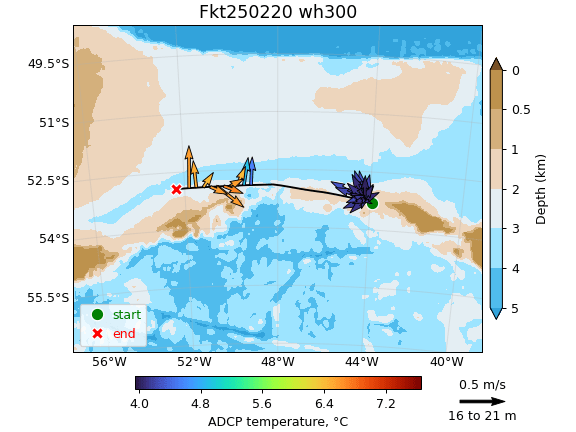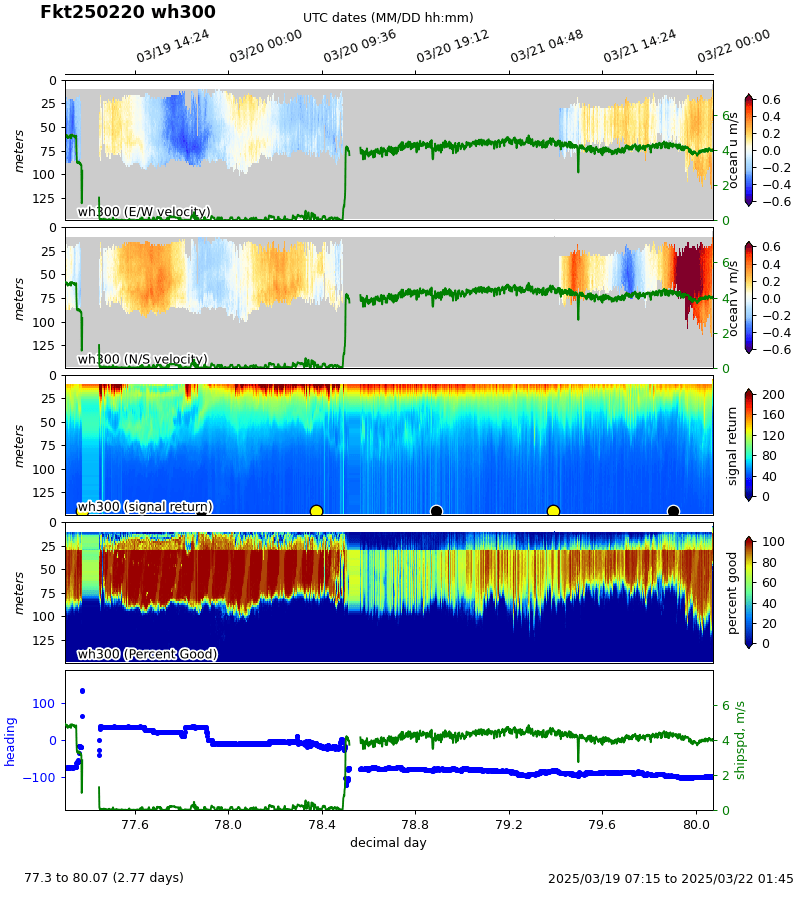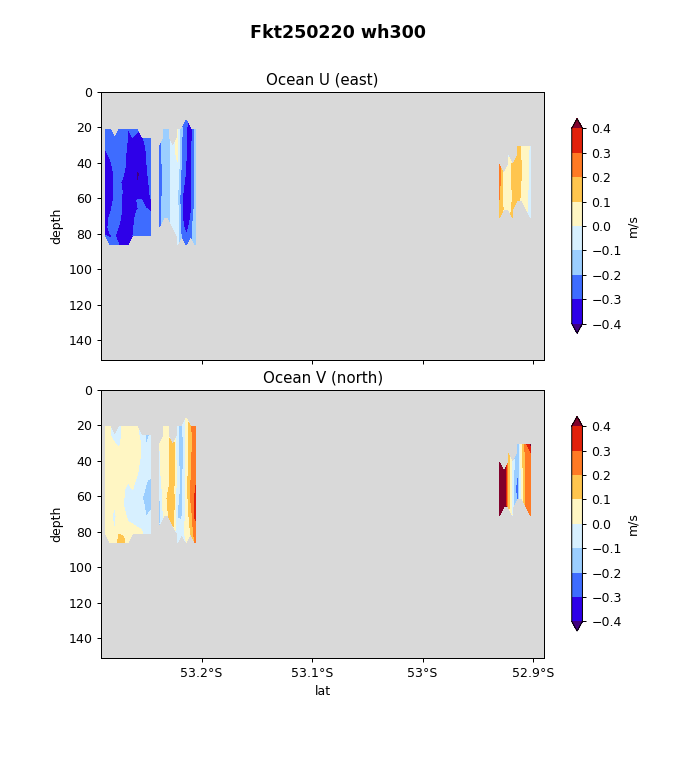Falkor (too) Shipboard ADCP data
The R/V Falkor (too) is funded by Schmidt Ocean Institute, and supports oceanographic research and technology development by providing a platform for these activities. Ocean current profiles are sometimes in the cruise plan, and during those times they are measured using hull-mount acoustic Doppler current profilers (ADCP).
There are two Doppler sonars manufactured by Teledyne R.D Instruments: (1) a 38-kHz phased array Ocean Surveyor (OS38), which typically reaches to over 1000m in narrowband mode and (2) a 300-kHz Workhorse (WH300) which typically reaches to 50m-80m. In addition there is a 150-kHz phased array sonar which is part of the Kongsberg EK80 bioacoustics suite. This EC150 instrument can measure bioacoustics or velocities. For general use, velocity data collection from all three sonars is done by UHDAS (University of Hawaii Data Acquisition System).
The OS38 can be operated simultaneously with two types of pings: uncoded pings ("narrowband" or NB), and coded pings ("broadband" or BB). The former provides better range but less vertical resolution than the latter. The two types of pings are processed independently and presented here as separate data sets. The default is Narrowband only, as this reaches deeper and provides a more robust dataset.
The EC150 can ping in either of two modes: Continuous Wave (CA) and Frequency Modulated FM), analagous to NB and BB, respectively. The EC150 typically reaches 200m and does not seem to be plagued by bubbles, as the WH300 and OS38 occasionally are.
Acquisition of these shipboard ADCP measurements is dependent on the science needs of the cruise. Acquisition, monitoring, and post-processing of the system are funded by Schmidt Ocean Institute.
Data and figures for Falkor (too) are presented via a "cruise list". Click on a cruise name to view the figures.
Data and figures for Falkor (now retired) are presented here.
Appendix: NetCDF files for shipboard ADCP data
For each cruise, the processed shipboard ADCP data and a corresponding estimate of the barotropic tide are provided as netcdf files, individually and aggregated by cruise and by year. For more information, follow this link.



